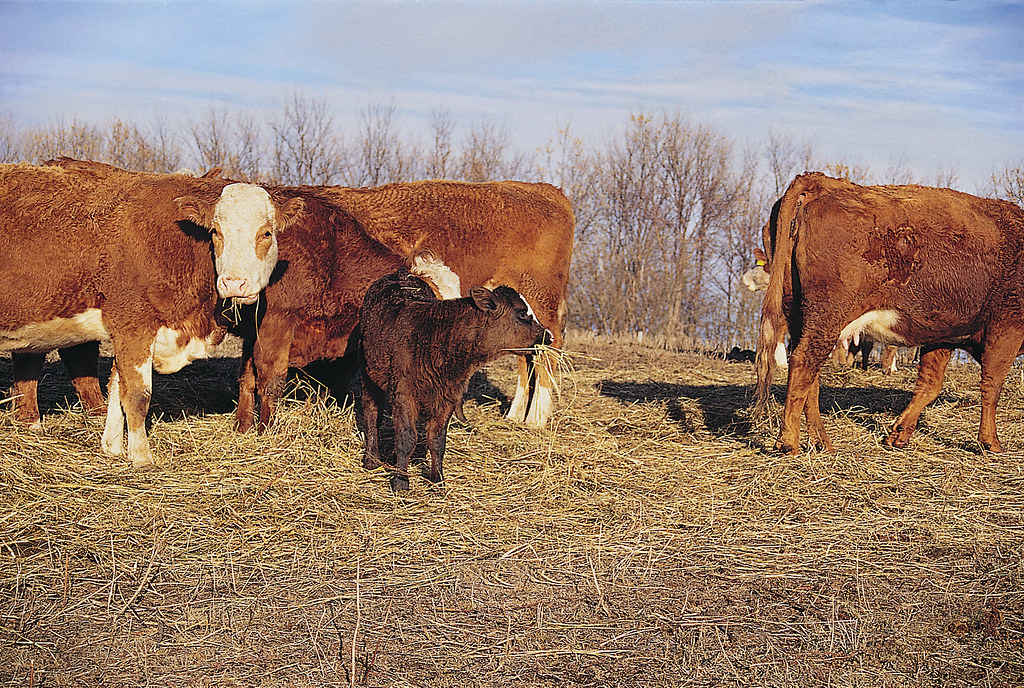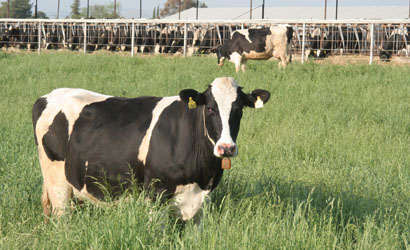
By Dr. Frank Mitloehner, UC Davis professor
Americans won’t halt global warming until they stop eating beef — at least, that’s what many people have been taught. Some have even reluctantly given up their steaks and cheeseburgers in a well-intentioned effort to save the planet.
Thankfully, those sacrifices aren’t necessary. A closer look at the data shows that while cattle account for a large share of emissions in other countries, they emit far less carbon here in the United States, thanks to American ranchers’ environmentally sustainable practices and world-leading efficiency.
Simply put, U.S. cattle aren’t the major driver of climate change. So Americans can feel good about whatever kind of burger they put on their grill this barbecue season.
Many people believe — mistakenly — that beef is uniquely bad for the environment. This confusion stems, in large part, from faulty math. Consider a recent article, which pegged the global mean emissions for 2.2 pounds (one kilogram) of beef at 220 pounds of carbon dioxide equivalents, the standard unit of comparison for greenhouse gases.
That figure includes emissions of methane, a greenhouse gas that cows and other farm animals belch out during their digestive process. Though potent in the near term, methane from cattle is a cyclical gas. Consider the full cycle — the carbon contained in methane (CH4) from cattle begins its journey in the atmosphere as carbon dioxide (CO2), which is captured by plants as part of photosynthesis. Plants turn this carbon into carbohydrates, which are then consumed by cattle. These cattle then release some of the carbohydrate carbon as methane, which over the course of 10 years, is destroyed and converted back to CO2. That carbon isn’t new, but recycled carbon, returned to the atmosphere.
If sources of methane do not increase during that time — if, in other words, the cattle herd doesn’t get larger — then methane is destroyed at the same rate it is emitted, meaning no additional methane is added to the atmosphere. So methane needs to be “backed out” of the calculation.
That brings the figure for emissions per 2.2 pounds of beef down from 220 pounds to 112 pounds of carbon dioxide equivalent. And even this much-reduced figure doesn’t begin to tell the story of U.S. beef.
In the United States, the carbon footprint of 2.2 pounds of beef is 48.5 pounds of carbon dioxide equivalent, including methane. And with methane backed out, the figure for 2.2 pounds of U.S. beef is just over 21 pounds of CO2 equivalent. In other words, the global figure is more than five times higher than the U.S. number.
We owe that level of success to our farmers and ranchers, the most efficient and advanced in the world. We produce 18% of the world’s beef with just 8% of the world’s cattle — while accounting for less than half a percent of global greenhouse gas emissions. Two head of cattle today produce nearly as much beef as three in 1970. Emissions per pound of hamburger have decreased by 16% in the past 40 years from this productivity improvement alone.
According to the United Nations Food and Agriculture Organization’s statistical database, total direct greenhouse gas emissions from all U.S. livestock have declined 11.3% since 1961, while livestock production has more than doubled. This massive increase in efficiency and decrease in emissions is a product of ingenuity and innovation in such areas as reproductive efficiency, better health through vaccinations and other veterinary care, genetics science and improvements in diet.
In addition, over the past half-century, the annual per capita demand for beef in the United States has decreased by roughly 30%, from 80 pounds per person then to 57 pounds now. That has allowed our beef exports to increase to 11% of total production, giving other countries access to beef with a lower carbon footprint.
The global average for beef’s greenhouse gas emissions is deceptive: grossly inflated for the United States and understated for pretty much every other nation. Not only does that prevent U.S. consumers from making well-informed dietary choices for their families, it also covers up the incredible success story we should be sharing with the rest of the world: Yes, we can reduce carbon emissions without giving up beef.
It’s time for Americans to grill whatever they choose without guilt — and help people in other countries do the same.
Frank Mitloehner, Ph.D., is a professor and air quality extension specialist in the department of animal science at the University of California, Davis and director of the CLEAR Center.








